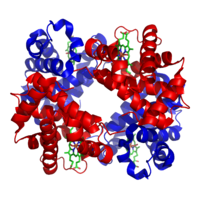
Photo from wikipedia
Introduction: This qualitative study sought to identify potential design and delivery alterations to inform cultural adaptation of educational animations about living donor kidney transplantation (LDKT) - previously developed for a… Click to show full abstract
Introduction: This qualitative study sought to identify potential design and delivery alterations to inform cultural adaptation of educational animations about living donor kidney transplantation (LDKT) - previously developed for a diverse population - to better fit Black Americans needs. Methods: We conducted a secondary analysis of 88 transcripts derived from interviews and focus groups conducted with diverse target users (62 kidney failure patients, 36 prior/potential donors, and 11 care partners) to develop 12 animations about LDKT, named KidneyTIME. Statements were abstracted and coded pertaining to cognitive and communication barriers to LDKT, and the perceived value of using the videos to learn and share the information with social network members using content analysis. Incidence counts of each content code were also calculated to assess differences between Black and non-Black patients. Results: Cognitive barrier codes included lack of knowledge, ambivalence, and concern for donor. Communication barrier codes included reluctance and difficulty talking about LDKT. Cognitive facilitating codes included attention-getting, efficient learning, manageable content, emotional impact, and new knowledge. Communication facilitating codes included delivery through many dissemination channels and broadly shareable. Compared to non-black patients (n=33) Black patients (n=29) more often stated concern for donor and reluctance/difficulty talking about LDKT as barriers, and less often stated efficient learning and manageable content as facilitators. Conclusion: Findings highlight the value of LDKT informational content that is visually appealing, digestible, non-threatening, and highly shareable. Heterogeneity may exist when considering access and intervention preferences in using KidneyTIME videos and highlight a potential for further cultural targeting or tailoring.
Journal Title: PLoS ONE
Year Published: 2022
Link to full text (if available)
Share on Social Media: Sign Up to like & get
recommendations!